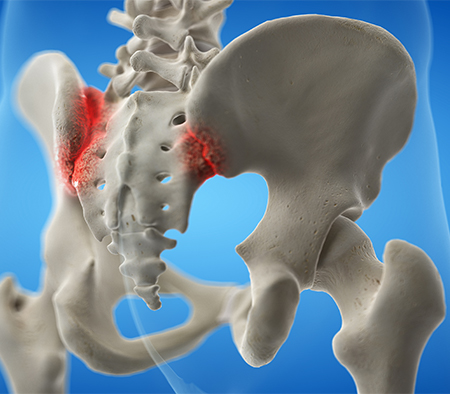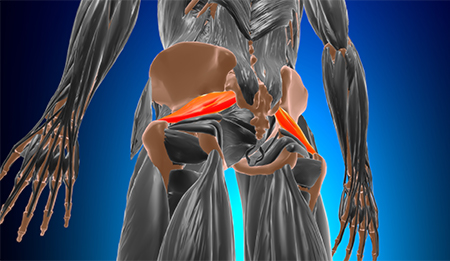 There’s not much worse…
There’s not much worse…
It starts in your lower back, and before you know it… there’s lightning shooting down the back of your leg. It’s excruciating.
Carrying your kids becomes risky, with worry and anxiety in the back of your mind, hoping it won’t trigger your sciatica.
Nothing is comfortable. Standing hurts. Walking hurts. Sitting hurts. Even lying down can hurt.
Sleep? Forget it – at least not without enough painkillers to open a pharmacy. And that’s something you know won’t last long until you’ve burned holes into your stomach.
Maybe you’re considering surgery or injections…
Desperate times, right?
At what cost?
Luckily, insurance might cover it. The bad news? Injections are often temporary pain relief. And sometimes, the pain can come back worse than before.
A few months of no pain almost sounds worth it.
If only you could get to the root of the problem.
 Let’s look at what’s behind this pain…
Let’s look at what’s behind this pain…
The beautiful web [the thoracolumbar fascia (TCLF)]
TCLF is a strong web of connective tissue comprised of three layers, extending from the mid-back to the sacrum. It separates the deeper spinal muscles from the muscles of the posterior abdominal wall.
Excessive strain, overuse, or poor posture when lifting, squatting, and other activities can take a toll on this fascia.
Damage to the TCLF can result in deep aching, throbbing, tightness, or vice-like pain throughout the lower back.
Trigger points can develop, referring to pain down the legs and throughout the back, hips, and glutes.
 A hidden troublemaker [the sacroiliac (SI) joint]
A hidden troublemaker [the sacroiliac (SI) joint]
It’s the joint between the sacrum and the hip bones. It’s estimated that the SI joint is responsible for 15% to 30% of lower back pain cases.
This joint can be picky. It doesn’t want to move until it’s ready. Think of the three bears: not too hot, not too cold.
Too little movement can result in inhibited mobility. Pain can be felt on the side of the lower back or into the buttocks and can radiate down the back of the leg, mirroring sciatica.
Too much movement can result in an unstable pelvis. Pain from too much motion is often felt in the lower back or hips, and it can radiate into the groin or pelvis. This condition is common in women after pregnancy.
 “Pseudo-sciatica” (the piriformis)
“Pseudo-sciatica” (the piriformis)
The piriformis is a deep muscle beneath the glutes. This muscle is like a rubber band, and it acts to rotate the thigh and hips.
The sciatic nerve, traveling right below the piriformis, can become trapped and squeezed by this powerful hip rotator.
It results in “pseudo-sciatica.” It resembles (and hurts like!) sciatica, but the source of the pain isn’t the spine.
We’ll address it all to treat this complex area.
We’ll treat all these areas: the thoracolumbar fascia, sacroiliac joint, and piriformis.
Through postural and muscular assessments, we will identify any imbalances in your muscles that could lead to postural distortions.
We will also identify any connective tissue or mobility imbalances you may be experiencing.
By gathering this information, we will know exactly where to begin treatment.
 Tackling the problem…
Tackling the problem…
You will be a part of tackling and overcoming your pain.
At-home stretches, exercises, and self-care techniques are important in addressing your concerns and relieving your pain.
For some, results come quickly and boldly.
For others, correcting and re-training your soft tissue may take some time.
After your initial assessments and treatment, we will review our findings and discuss treatment options. You will receive a recommended treatment program tailored to you and your condition, including an estimate of how many sessions it might take to resolve your concern and meet your treatment goals.
We are committed to helping you achieve your health and wellness goals.
Let’s resolve this pain… for good.
Hip and sciatic pain aren’t unique. About 75-85% of Americans experience it during their lifetime.
But there’s good news! It is temporary in approximately 90% of cases, and pain improves without surgery.
You’re in the right place!
Give me a call for a free consultation. Let’s talk more about how I can help: (801) 406-6577.


